Potting soil is an essential part of gardening; it provides the ideal environment for your plants to grow and thrive. But if not stored properly, you’ll end up with a soggy mess that won’t do anyone any good! Whether you’re gathering potting soil in bulk or already have it pre-packaged, knowing how to store it correctly can help keep your garden healthy and beautiful – without wasting money on unnecessary replacements. In this blog post, we’ll walk through what you need to know about storing potting soil: from understanding the ingredients and moisture levels to using proper storage containers.
What is Potting Soil?
Potting soil is a type of soil that is used to assist in growing plants in containers. Unlike the soil found in your backyard, potting soil is specially designed to retain moisture and provide a balanced mix of nutrients for your plants. [1] It contains a blend of organic and inorganic materials, like peat moss, perlite, vermiculite, and limestone.
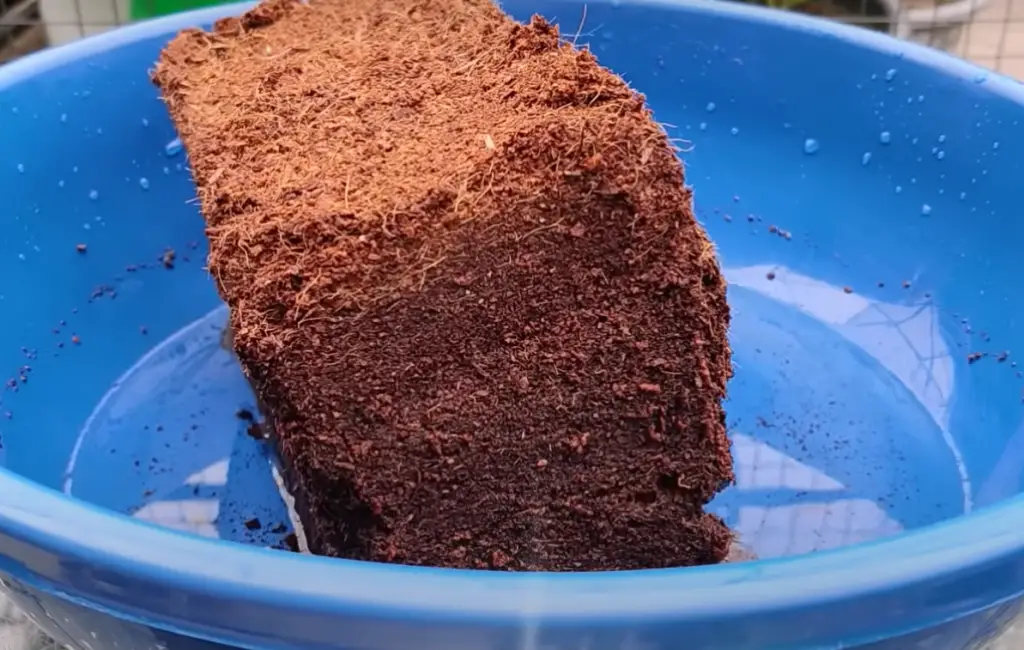
Peat moss is used to absorb and hold water, perlite and vermiculite are added for drainage and to provide aeration for roots, while limestone is added to adjust the pH level of the soil. Potting soil is an essential ingredient in container gardening, helping plants thrive and prosper, no matter the environment. If you’re looking to start your own container garden, be sure to choose the right type of potting soil for your plants. With the right combination of nutrients and proper watering techniques, your plants will be healthy and vibrant in no time.
Why store potting soil?
Potting soil should be stored properly to keep it from becoming soggy, moldy, or infested with pests. With that in mind, there are several reasons why you should store potting soil correctly:
- To maintain the proper moisture levels – Potting soil must contain a certain amount of moisture for your plants to thrive. If it’s too wet or dry, your plants won’t be able to absorb all the necessary nutrients they need. Without proper storage techniques, you could end up with either an overly damp or overly dry soil mix.
- To prevent contamination – Improperly stored potting soil is also prone to mold spores and bugs that can contaminate your entire garden. By using airtight containers and storing your soil in a cool, dark place, you can minimize the chances of contamination.
- To protect it from evaporation – Potting soil is composed of several ingredients that have different levels of water retention. If left in an open container or exposed to the elements, the water content can quickly evaporate due to high temperatures and wind. [2]
What if you don’t store potting soil properly?
If you don’t store potting soil properly, the soil may become compacted or unable to aerate. This can reduce the amount of water and nutrients available to your plants. Additionally, if you don’t have a proper way of storing potting soil, it can attract pests like rodents or insects that will feed on organic matter and cause damage to your plants. Furthermore, if stored in wet conditions for too long, potting mix could also become anaerobic and start producing toxic gasses such as methane which can be harmful to both humans and animals. Lastly, improper storage of potting soil can lead to mold growth which is not only bad for your plants but also hazardous for your health. For these reasons, it’s important to store potting soil properly.
How to Store Potting Soil
Now that you know why it’s important to store potting soil correctly, let’s look at the best way to do this.
How to prepare potting soil for storage
Before storing potting soil, it’s important to make sure that it is properly prepared. This means ensuring the moisture levels are optimal for your plants, as well as removing any debris or rocks that may be present in the soil.
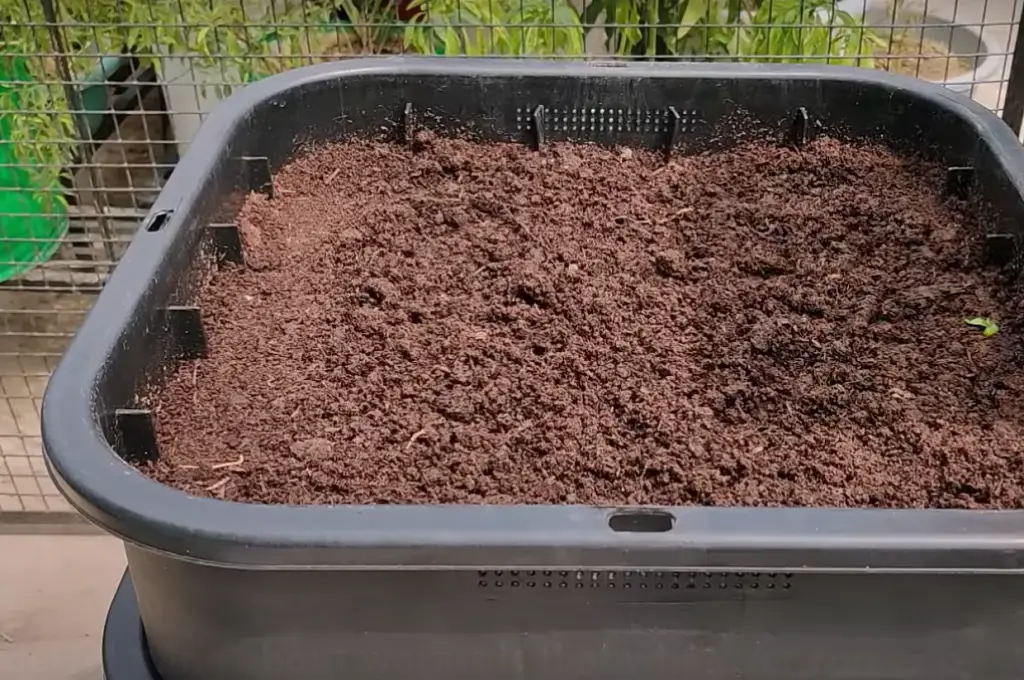
To do this, spread out the soil on a tarp and allow it to dry for several hours before transferring it into an airtight container.
How to package potting soil for storage
Once you’ve prepared your potting soil and ensured that it is at the proper moisture level, it’s time to package it for storage. The ideal container should be airtight in order to keep out pests, moisture, and sunlight. Plastic containers with a secure lid are great options for storing potting soil.
Where To Store Bags Of Potting Soil?
After properly packaging your potting soil, it is important to find a suitable storage place. The ideal location should be cool, dark, and dry. Avoid storing in direct sunlight or near sources of heat as this can cause the moisture levels to fluctuate too much. You also want to make sure that it’s not in an area prone to flooding or high humidity, as these conditions can lead to mold growth and attract pests. A basement, garage, or shed are all good options for storing potting soil bags, just make sure you keep them off the floor if possible. [4]
How Long Can You Store Potting Soil?
Potting soil can be stored for 6 months to a year depending on the type of potting soil you have and how it was stored. [5] Properly stored potting soil should remain viable for up to a year, however it is recommended that you check on it periodically to ensure the moisture levels are still appropriate. If your potting mix appears to be too wet or dry, you may need to adjust the storage environment or replace it with fresh potting soil.
How To Store Used Potting Soil
Used potting soil can still be used for gardening projects, however it will need to be stored properly.
Additionally, it’s important to ensure that all weeds and debris have been removed from the soil before storing to prevent any unwanted pests or mold growth. Finally, if you plan on using the used soil in a different container than where it was previously planted in, make sure to water it thoroughly before use in order to avoid damaging your plants with an overly dry mix. [6]Can You Leave Potting Soil Outside?
If you’re wondering whether potting soil can be left outside, the answer is yes, but with a few precautions. While potting soil is specifically formulated to provide plants with the essential nutrients they need to thrive, it can be vulnerable to the elements if left outside.
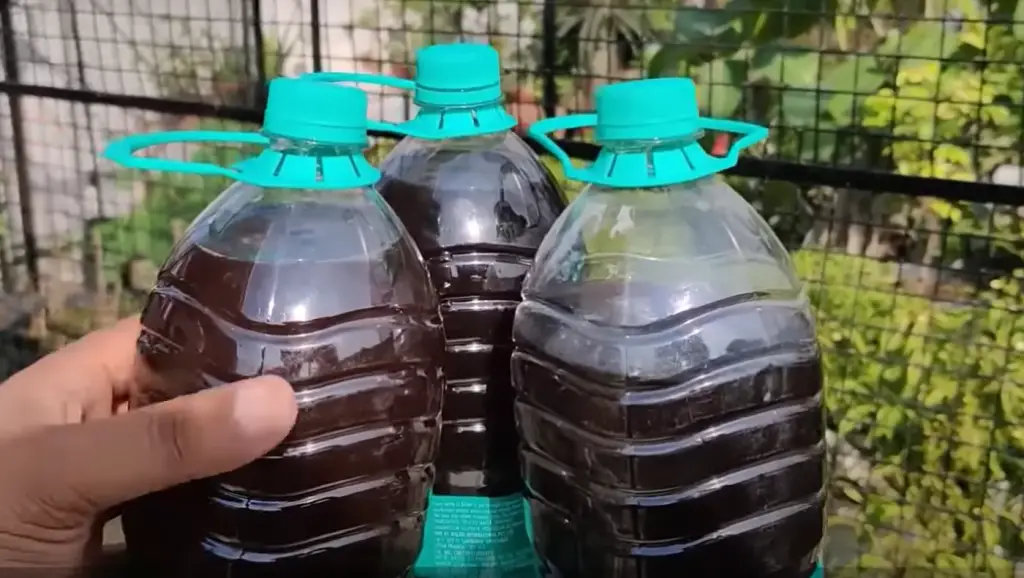
Sunlight, wind, and rain can all affect the quality of the soil, potentially reducing its fertility and causing clumps to form. To prevent this, it’s important to store your potting soil in a dry and shaded place, away from direct sunlight and moisture. By doing so, you can ensure that your soil stays in top condition and continues to provide the nutrients your plants need to grow strong and healthy.
How To Store Potting Soil Inside (Or In An Apartment)
If you live in an apartment or have limited outdoor space, it can be a challenge to find storage for potting soil. Fortunately, there are several solutions that you can utilize to store your potting soil inside. First, consider using airtight containers such as plastic bins or large garbage bags to store your soil. This will prevent moisture and dust from accumulating and keep the soil fresh. Alternatively, if you have shelves, you can use plastic storage containers to store small amounts of soil. Another option is using a collapsible fabric container that can be easily folded away when not in use. Whatever method you choose, make sure your storage area is dry and temperature-controlled to preserve the quality of your soil. With these tips, you can enjoy gardening indoors and keep your potting soil in top condition.
How To Store Potting Soil Over Winter
In cold months, the quality of your potting soil can quickly deteriorate if it’s not stored properly. If you plan on using your soil again next season, it’s important to take steps to protect it from freezing temperatures and moisture. To do this, store your potting soil in an airtight container or plastic bag, and place it in a cool and dry area such as a basement or garage. Additionally, make sure to cover the container with something waterproof like tarp or burlap sack to prevent water from getting into the mix. With these precautions in place, you can ensure that your potting soil remains viable for use during the winter months.
How To Make Potting Soil in a Bag Last Longer
If you’re looking for ways to make your potting soil last longer, there are a few steps you can take. First, always store your soil in an airtight container, such as a plastic bag or bin. This will keep out moisture and pests that can reduce the shelf life of your soil. Additionally, consider adding compost or fertilizer to replenish any nutrients that may have been lost over time. Finally, be sure to check on your potting soil regularly and add additional water if necessary to maintain optimal moisture levels and help prevent clumping. Following these tips can help ensure that your potting soil remains viable for years to come! [7]
How To Tell if Potting Soil in the Bag Has Gone Bad
If your potting soil has been stored improperly or for too long, it can become unusable. To tell if the soil in your bag has gone bad, take a look at its color and consistency.
Additionally, check to see if the soil is dry and clumpy, or if it’s too wet and mushy. These signs can indicate that the potting soil in your bag has gone bad, so it’s best to replace it with fresh potting soil before planting.Practical Tips for Storing Potting Soil
Storing potting soil correctly is essential in order to maintain its quality and keep it free from pests and mold.
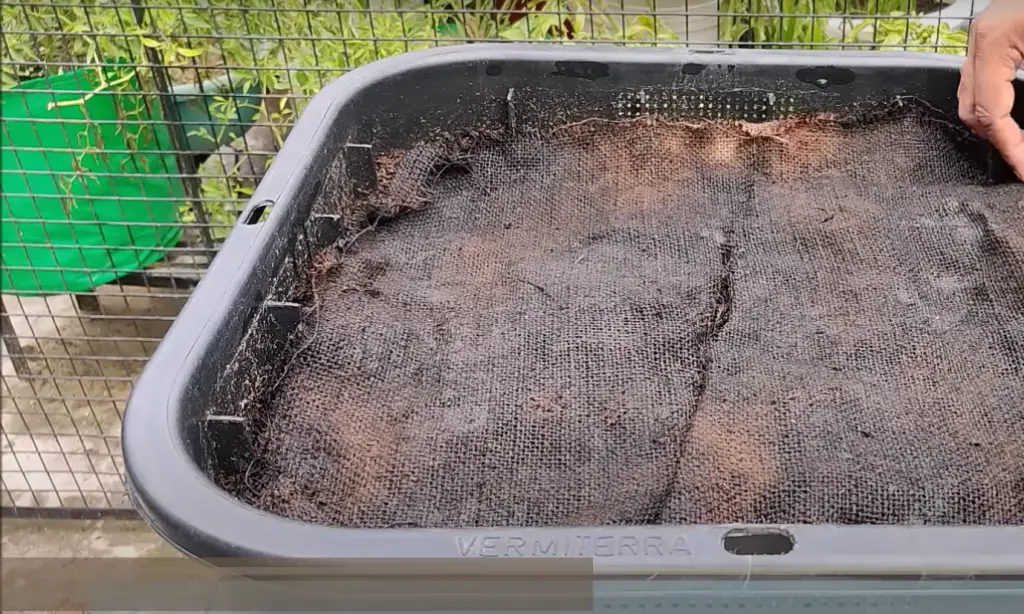
Here are some practical tips for storing your potting soil:
- Choose a cool, dry place for storage, such as a basement or shed. Avoid direct sunlight and high temperatures, as these can affect the quality of the soil.
- If possible, store your bagged potting soil off the ground, on top of pallets or shelves. This will help prevent moisture from seeping into the bottom of the bag.
- Use an airtight container to store your potting soil if you don’t have access to a plastic bag. Tubs with lids make great containers for storing potting soil.
- If you need to store your potting soil outside, invest in a waterproof tarp or burlap sack to keep the moisture out.
- For long-term storage, consider mixing in some compost or fertilizer to replenish any nutrients that may have been lost over time. This will help make sure your potting soil stays viable and can be used again when needed.
By taking these simple steps, you can ensure proper storage of your potting soil and get more use out of each bag!
FAQ
How do you store an open bag of potting soil?
An open bag of potting soil should always be stored in an airtight container. This will help maintain the humidity level inside and reduce the risk of mold or other pests taking up residence in your soil while in storage. Additionally, it’s important to keep your potting soil off the ground by using shelves or hangers to store them. This will help to reduce the risk of contact with moisture, bugs, and other contaminants that can damage your soil over time.
Can I use potting soil that is 2 years old?
It depends on the condition of the soil. If it is stored correctly and kept away from moisture, then yes, you can use potting soil that is two years old.
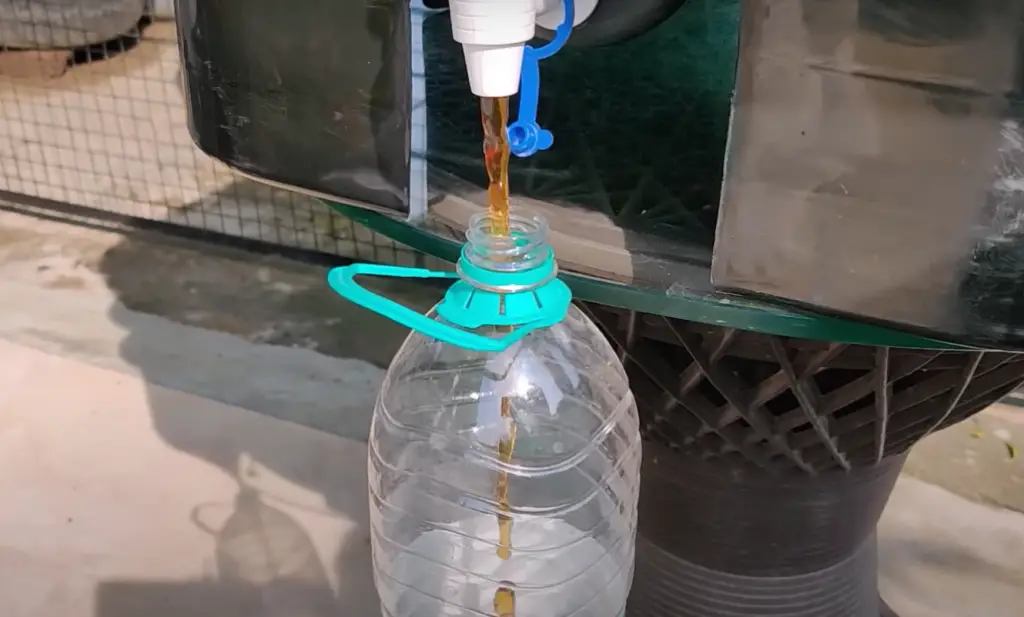
However, if the bag has been exposed to moisture or humidity, then you should discard it as mold or other pests may have taken up residence in your soil. Additionally, over time your soil will lose some of its nutrients which could negatively impact the health of your plants so adding compost or fertilizer before using is often recommended. It’s always best practice to buy new potting soil if possible; however, with proper storage techniques and a keen eye for quality control, you can still make good use out of an older batch of potting soil.
Can I mix old potting soil with new?
Yes, you can mix old potting soil with new. However, it is important to inspect the older bag of potting soil for any signs of mold, discoloration or pests before mixing with a new batch. Additionally, adding compost or fertilizer to replenish any nutrients that may have been lost over time can be beneficial. Finally, always be sure to store your soil in an airtight container such as a plastic bin or garbage bag to keep out moisture and bugs. Following these steps can help ensure your potting soil remains safe and effective throughout its lifespan.
What is the difference between potting soil and potting mix?
Potting soil is a combination of natural organic materials such as peat moss, compost, and perlite. It helps provide necessary nutrients to plants while also providing aeration and drainage. Potting mix is usually more lightweight than potting soil because it contains less organic matter. It typically consists of ingredients like peat moss, coco coir, vermiculite, sand, and perlite for added drainage and aeration. Both potting soil and potting mix can be used for general purposes; however, the choice will depend on the type of plant you are looking to grow and its specific needs.
Is potting soil good for gardens?
Yes! In fact, most people prefer to use potting soil over regular garden soil for their plants. This is because potting soil usually contains organic material such as peat moss, compost, and perlite which help to provide necessary nutrients to your plants while also providing aeration and drainage. Additionally, potting soil has a lower density than regular garden soil making it easier to work with and more lightweight when used in containers. For these reasons, many gardeners prefer to use potting soil over traditional garden soil when planting indoors or in containers outdoors.
What kills mold in potting soil?
There are a few methods you can use to kill mold in potting soil. The first is to let the soil sit in direct sunlight for at least 3-4 hours. This will help to dry out the excess moisture which may be contributing to the mold growth. You can also sprinkle baking soda over the top of your soil as this will help absorb any excess moisture and neutralize acidity levels, both of which can contribute to mold growth. Finally, adding vinegar or hydrogen peroxide directly onto the affected area will help to kill any bacteria that could be causing the mold growth as well. Following these steps should help reduce and eliminate any mold in your potting soil so it’s ready for use again!
Can I use my potting soil after it gets wet?
Yes, you can use your potting soil after it gets wet; however, it is important to make sure the soil is completely dry before using. Excess moisture in the soil can cause mold or other pests to take up residence, which can be harmful for your plants.
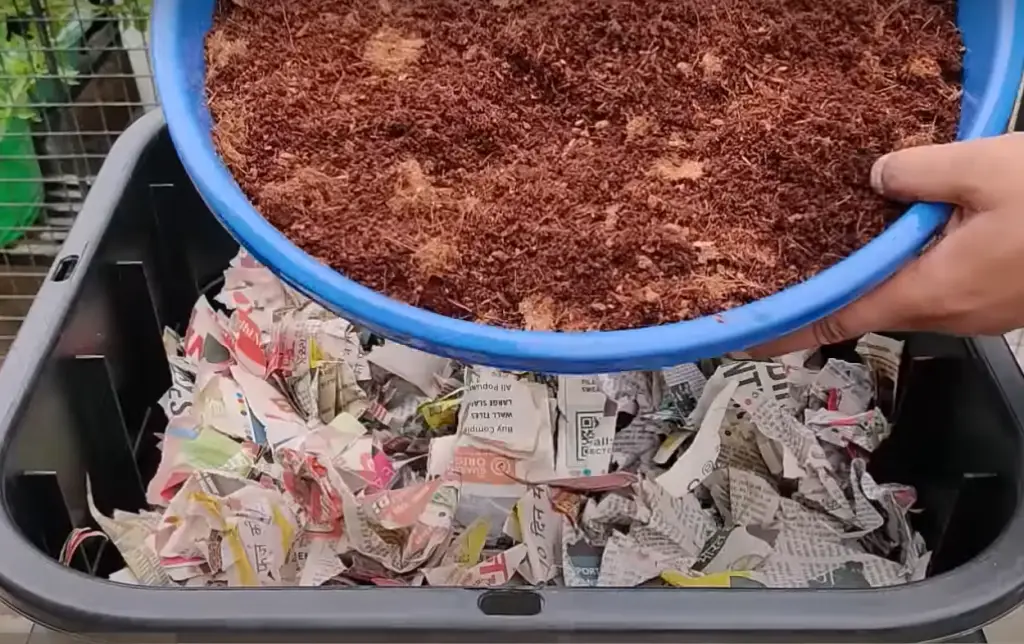
If you notice any signs of mold or discoloration in the soil, then it’s best to discard and replace with new. Additionally, if possible, try to store your potting soil off the ground by using shelves or hangers to ensure it won’t come into contact with excess moisture or bugs. Following these steps will help keep your potting soil in top condition for years to come!
Useful Video: Cleaning Burned On Grease From Stainless Steel
Conclusions
Storing potting soil is a crucial part of gardening and is essential for maintaining a healthy and beautiful garden. When storing potting soil, it is important to understand the ingredients used and the moisture levels, as this will help you store your soil in a way that preserves its quality. Be sure to find storage containers with proper lids that are both air-tight and waterproof – this will help your potting soil stay fresher for longer. Planning ahead can be a great way to make sure your plants get all the nutrients they need and ensure the environment remains ideal for them to grow. With careful maintenance and proper storage, you can have a thriving garden year after year!
References:
- https://www.simplegrow.com/pages/what-is-potting-soil
- https://helpmecompost.com/soil/how-to-store-potting-soil/
- https://helpmecompost.com/soil/how-to-store-potting-soil/#:~:text=Containers%20To%20Store%20Potting%20Soil,and%20all%2C%20in%20the%20container.
- https://garagesmart.com.au/what-is-safe-to-store-in-the-garage/
- https://www.homesoils.com/how-to-store-potting-soil/
- https://rosysoil.com/blogs/news/old-potting-soil
- https://www.evergreenseeds.com/how-to-store-potting-soil/#8211_Prepare_for_Storage





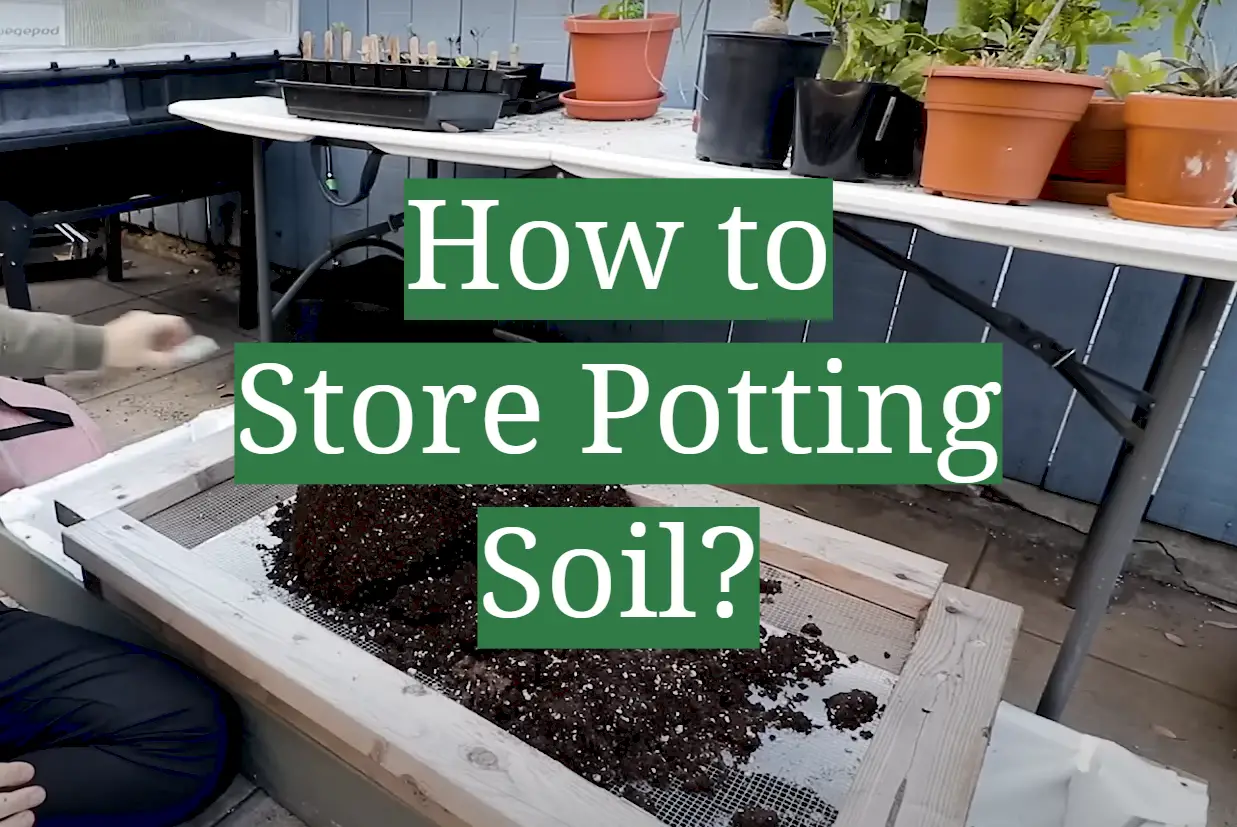


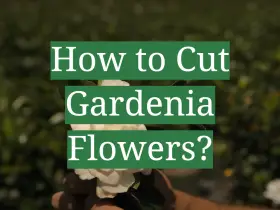
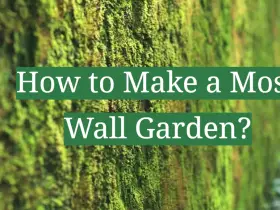
Leave a Reply
View Comments